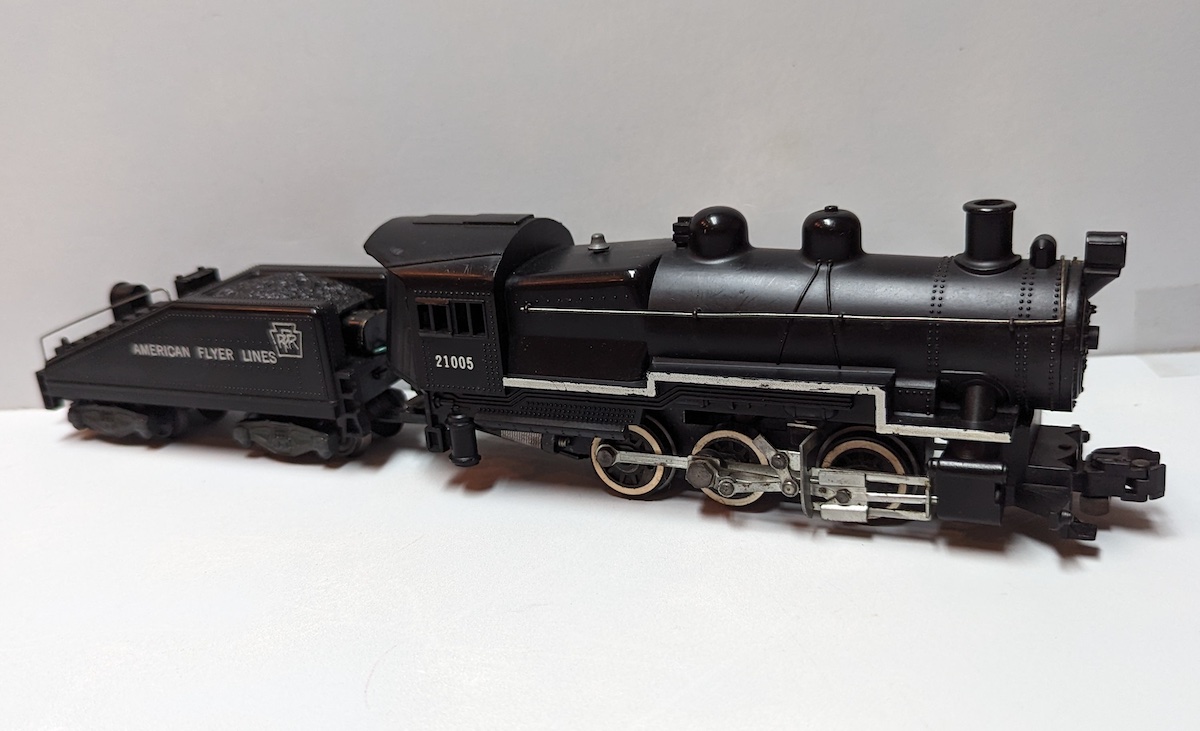Postwar American Flyer Steam Locomotive 0-6-0

The Pennsylvania Railroad and the Rise of the 0-6-0 Switcher
In its prime, the Pennsylvania Railroad (PRR) was known as "The Standard Railroad of the World." This title reflected not only its vast network but also its innovative approach to railway operations. To support its extensive system, the PRR had thousands of trackside industries that required regular switching services. These industries were often located in industrial complexes with tight clearances and sharp curves, making it essential for the railroad to have a reliable and compact locomotive for such tasks.
This need led to the development of the 0-6-0 switcher, which the PRR referred to as a "shifter." The first model, the B6 0-6-0, was built in 1902, and by 1920, the railroad had over 362 of these locomotives in service. The B6s were well-designed, robust, and efficient, remaining in use well into the 1950s before being gradually replaced by diesel switchers.
One of the most notable examples of the B6 class was PRR No. 5244, which became the last steam locomotive operated by the Pennsylvania Railroad in regular service. By 1959, this locomotive was leased to Union Transportation in New Egypt, New Jersey, marking the end of an era for steam power on the PRR.
The American Flyer Model and Its Origins
The B6 0-6-0 switcher's design captured the attention of model train enthusiasts, leading to its representation in scale models. One of the most famous manufacturers to produce this locomotive was American Flyer, which collaborated with Gilbert to create a detailed model of the B6 class.
Gilbert introduced the B6 0-6-0 in HO scale in 1950, and it remained in the catalog until 1963. In 1957, the company released an S gauge version under the name "No. 263." The artwork for this model closely resembled the HO scale version, but it was based on a handmade prototype. The S gauge model was only available through 1958.
Key features of the S gauge model included asymmetrically spaced axles, correctly placed steam and sand domes, and a visible turbogenerator ahead of the stack to provide power for the headlight and rear light. The model also featured a Belpaire firebox, although slightly misshapen, and unflanged center drivers. Even the slope-backed tender had a handrail, showcasing Gilbert’s commitment to prototype realism.
Production Details and Variations
The pre-production S gauge model was a handmade engine, numbered 21004, and was part of Gary Baloun’s collection. It originally came without a tender, having been acquired from Maury Romer, the Production Manager of the American Flyer Train Division. The frame of the prototype was made from a modified 0-8-0, with one driver section removed. The current tender is an earlier production sample.
Gilbert’s first production samples were made of white plastic and stamped 21004, similar to the full production models, which were made of black plastic. However, the white plastic versions had slightly different castings, particularly on the tender, where the plug-in arrangement varied.
The tender was marked "American Flyer Lines" rather than "Pennsylvania," as depicted in the catalog. Early production engines were likely used for display at events like the Toy Fair and in the Gilbert Hall of Science. There is some debate about whether the 263 model was ever actually produced, as the prototype and initial production units were numbered 21004. Most reported 263s are believed to be later black plastic models.
Catalog Numbers and Production Changes
In 1957, Gilbert introduced the S gauge switcher as part of the No. 20315 Keystone Rocket Freight Set, which included a new operating rocket launching car, a Pennsy gondola, and a Flyer caboose. At this time, Gilbert began using a five-digit computerized numbering system, which did not always match the actual product. The engine’s catalog number was listed as No. 21005, while the image showed the number 263. The actual number used was No. 21004.
In 1958, the Keystone Rocket Freight Train was re-released as set number No. 20423. The artwork for the engine still depicted the body of the prototype, but the cars were updated. The gondola was replaced with a searchlight car, and the caboose was painted bright yellow. The engine number was changed to 21005 after minor modifications.
There were several differences between the two versions. The 21005 model was less expensive to produce, as it lost the reverse light bulb, socket, and lens, and the tender trucks no longer had electrical pickup shoes. However, the 1958 model included a small enhancement: its running boards were outlined in white paint, though the handmade 21004 mockup had one side painted with a white stripe.
Collectibility and Value
Today, the 0-6-0 locomotive remains a favorite among collectors due to its historical significance and performance. These models are excellent runners and make a great addition to any American Flyer collection. They can often be found at train shows and online.
The 21005 model is considered more desirable than the 21004 because fewer of them were produced. In terms of value, the 21004 is priced at $170 for good condition and $294 for excellent condition, while the 21005 is valued at $125 for good and $381 for excellent condition.

Posting Komentar untuk "Postwar American Flyer Steam Locomotive 0-6-0"
Posting Komentar